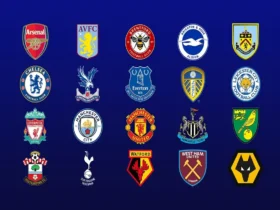Understanding YouTube Monetization
At the heart of YouTube monetization lies the symbiotic relationship between creators, viewers, and advertisers. Creators produce content, viewers consume it, and advertisers pay to reach those viewers through targeted advertisements. This exchange fuels the economic engine of YouTube, allowing creators to earn revenue based on the ads displayed alongside their videos.
Factors Influencing Earnings Per View
-
- CPM (Cost Per Mille): CPM serves as the cornerstone of YouTube monetization, representing the amount advertisers pay for 1,000 ad impressions. This metric fluctuates based on various factors, including the content niche, audience demographics, advertiser demand, and geographic location. Niches such as finance, technology, and luxury tend to command higher CPM rates due to their appeal to affluent audiences and advertisers.
- Ad Engagement: Beyond mere impressions, ad engagement plays a crucial role in determining earnings per view. Higher engagement metrics, such as click-through rates (CTR) and watch time, signal to advertisers that viewers are actively interested in their products or services, leading to higher ad rates and, consequently, increased earnings for creators.
- Content Type: The type of content a creator produces can significantly impact their earnings per view. Educational, informative, and high-quality content often attracts a more engaged audience, resulting in higher ad engagement and CPM rates. Conversely, content that is deemed low-quality, controversial, or unsuitable for advertisers may struggle to monetize effectively.
- Audience Location: Ad rates vary depending on the geographic location of the viewer, with advertisers typically willing to pay more to reach audiences in regions with higher purchasing power and consumer demand. Creators with a global audience may experience fluctuations in earnings per view based on the geographic distribution of their viewership.
Average Earnings Per View: Myth vs. Reality
Dispelling the myth of a one-size-fits-all earnings per view figure, industry estimates suggest that creators can earn anywhere from $0.25 to $4 per 1,000 views. However, it’s crucial to recognize that these figures are not set in stone and can vary widely based on the aforementioned factors. Creators operating in lucrative niches with highly engaged audiences and favorable ad demographics may exceed these averages, while others may fall short due to lower CPM rates or niche-specific challenges.
Maximizing Earnings on YouTube
Armed with insights into the intricacies of YouTube monetization, creators can adopt strategies to maximize their earnings potential:
- Audience Engagement: Cultivating a loyal and engaged audience is key to driving ad engagement and increasing earnings per view. Encouraging viewers to like, comment, share, and subscribe not only enhances engagement metrics but also signals to advertisers the value of the creator’s audience.
- Diversifying Revenue Streams: While ad revenue serves as the primary monetization channel for many creators, diversifying revenue streams can provide additional sources of income and insulate against fluctuations in ad rates. Opportunities such as sponsorships, merchandise sales, memberships, and crowdfunding empower creators to monetize their content beyond traditional advertising.
- Optimizing Content for Advertisers: Creating content that aligns with advertiser interests and brand values can attract higher-paying ads and elevate earnings per view. Conducting keyword research, targeting specific audience segments, and leveraging analytics to identify high-performing content can help creators optimize their content strategy for maximum monetization potential.
Conclusion: Deciphering the Code
In the labyrinthine realm of YouTube monetization, earnings per view serve as a barometer of a creator’s success, reflecting not only the quantity but also the quality of their content and audience engagement. While the path to monetization may be fraught with challenges and uncertainties, armed with a deep understanding of the factors influencing earnings per view, creators can navigate this landscape with confidence, unlocking the full earning potential of their YouTube channels. As the digital landscape continues to evolve, so too will the strategies and tactics employed by creators seeking to monetize their passion and creativity on the world’s largest video-sharing platform.

































